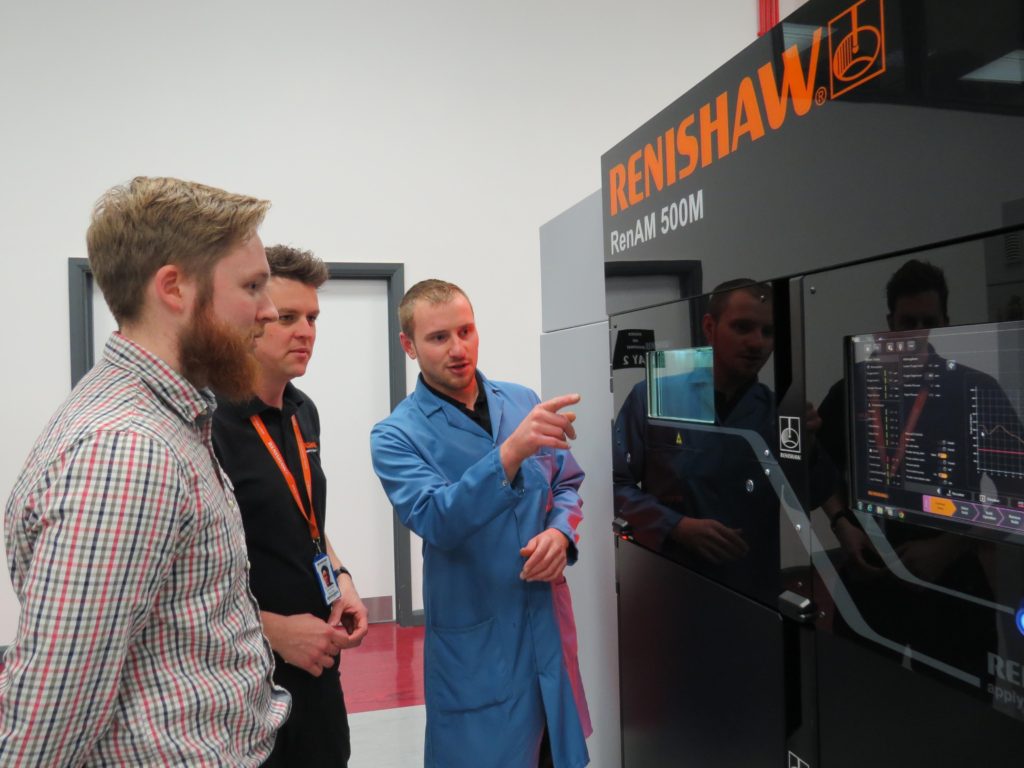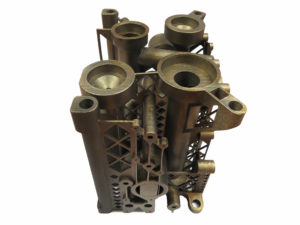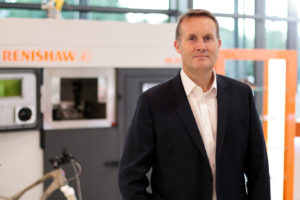Lowering the entry barriers of additive manufacturing

Marc Saunders, director of Renishaw’s Global Solutions Centre, explains how additive manufacturing is moving from the world of rapid prototyping into series production
A famous quote attributed to Benjamin Franklin says: “Tell me and I forget. Teach me and I remember. Involve me and I learn.”
Although in reality Franklin never said these words, the quote has become extremely popular because its message resonates with anyone who has ever tried to make sense of new technology.
To a large extent, the quote also applies perfectly to additive manufacturing (AM).

Many companies first use metal additive manufacturing (AM) for rapid prototyping and tooling applications, because it enables new designs to be produced in a short lead-time. These time compression benefits provide quick wins, de-risking product development whilst the design is still in flux.
But AM also offers companies unprecedented freedom to design innovative new products for series production. The most well-known additive manufacturing benefits include the ability to design complex geometries with internal features like lattices and cooling channels, better strength-to-weight ratios and efficient material usage with minimal waste. As manufacturing volumes rise, these benefits can make a substantial impact.
Despite these clear advantages of AM and the obvious excitement surrounding the technology, there are still certain barriers that many companies face when considering implementing a costly new manufacturing system on the shop floor.
To understand the added value of additive manufacturing as a manufacturing tool, industry must be prepared to change the way it thinks about design for series production. Whenever such a significant shift in mentality is needed, the best way to convince people is to get them involved and let them try out the new technology for themselves.
In fact, for some time now there has been a clear need in the world of AM to make the technology more accessible to original equipment manufacturers (OEMs) from across industries including medical, aerospace, automotive, oil & gas and consumer products.
Asking the right questions

A common question OEMs ask themselves is which parts or products could be manufactured using additive manufacturing. Although sensible, this is not always the best question to ask. Many parts can be manufactured using AM, but this doesn’t necessarily mean they should be made using AM.
Instead, manufacturers should consider what additive manufacturing makes possible that was impossible before and how it could help solve the specific design challenges they might have. Unfortunately, the answer to such a disruptive question is not always straightforward and usually requires time, effort and expertise to investigate. And, of course, access to an AM machine.
With additive manufacturing, parts can benefit from topological optimisation, a design technique that optimises the strength of a structure while reducing its mass. Put simply, by topologically optimising a part you remove redundant material from it, whilst simultaneously ensuring that it is sufficiently strong and stiff to fulfil its function.
It’s a bit like sending a part to the gym to work out. Topological optimisation is particularly useful in applications where stiffness and light weight are important, such as aerospace or automotive applications, where lightness can lead to substantial benefits throughout the part’s lifetime.
Another question OEMs should ask themselves is what additional processes will be needed to complete the production of an additively manufactured product. AM is a near-net-shape process, and some level of post-processing will be required such as; support removal, heat treatment, surface treatment, finish machining and inspection.
One additional requirement of additive manufacturing, particularly when it comes to metal powder bed fusion, is being aware of safe material handling practices. It is important that AM facilities, equipment and operating practices are all designed to mitigate the risks associated with working with fine metal powders.
Essentially, AM can offer remarkable design and production benefits, and companies should go through a rigorous assessment to understand how these benefits apply to their situation, and to prove the productivity and capability of the AM process.
Where do you start?
There is a lot to learn about additive manufacturing and luckily, in our interconnected world, useful information is readily available. However, the best way to answer the questions above, and any others you might have, is to actually experiment with the technology, get involved with it and see what it can do for a specific project or product.
This is where Renishaw’s Additive Manufacturing Solutions Centres can help. They offer a cost-effective and secure development environment, equipped with ‘incubator cells’ that companies can rent out and use to build their knowledge and confidence when using AM technology.
Incubator cells within the Solutions Centres contain a metal AM machine, design workstation and the ancillary equipment required to design, build and refine a product. Clients will be able to use a range of materials and will have the support of experienced applications engineers. Access to essential finishing processes is also available.
By working in an incubator cell, organisations get a chance to gain knowledge from specialised engineers who can help deploy the capabilities of AM on their project. Equally important, the latest AM technology and knowledge is also complemented by Renishaw’s extensive experience in metrology, machining and finishing, which in turn helps companies to develop integrated manufacturing solutions.
The first step when trying out additive manufacturing is to understand the new design framework and capabilities, working alongside Renishaw application engineers to redesign your part or product for the additive manufacturing process. This means creating a design that embodies the benefits AM has to offer.
Once the design is established, it’s time to turn the concept into metal, which means rigorous testing and objective benchmarking. It typically takes several design iterations to optimise the product design and the AM process.
For any new product design, the manufacturer needs to be confident that the production process is predictable and consistent, so a period of pre-production is needed to establish AM process capability. They also need to understand the finishing and measurement processes and tools they might need to make dependable parts.
These process steps will not necessarily be stages of a linear process for every project. Normally, several design iterations are needed before the ideal design is identified and often, designers will have to go back to the drawing board – or in this case, CAD software – to rethink certain aspects of the product. However, this is where the flexibility of additive manufacturing comes in, making it easy to create new design iterations should additional requirements be added.
Leading disruption in your market
Additive manufacturing provides many attractive capabilities that will disrupt product markets, supply chains and business models. To take full advantage of this opportunity, however, firms will need to adapt their design thinking – something of a leap of faith is needed. However, if backed by practical experience and sound engineering practice, committing to AM need not be a leap in the dark.
The first businesses to take the jump will reach the furthest and benefit the most. We can’t force people to jump. We can only tell them, teach them and involve them.

